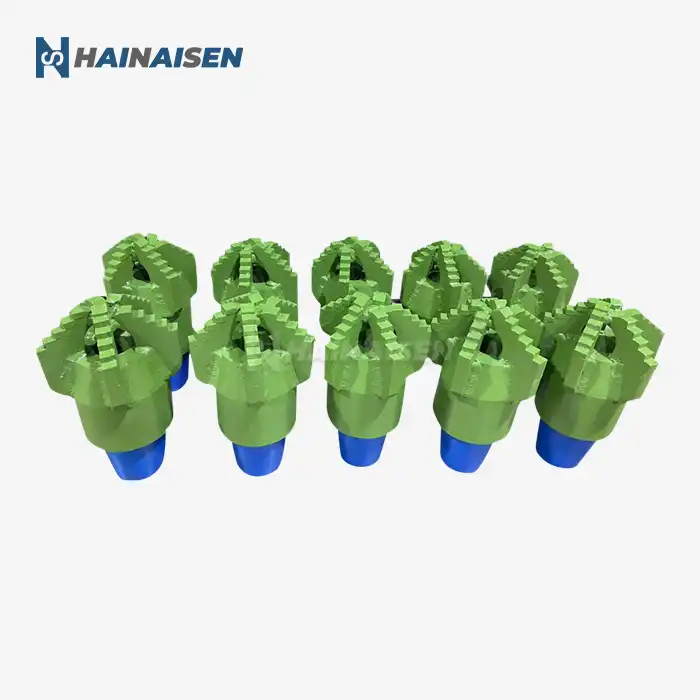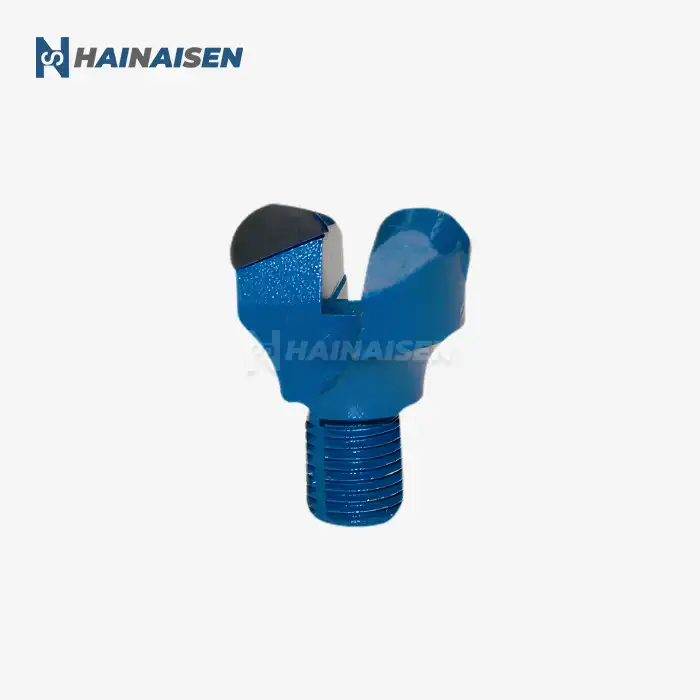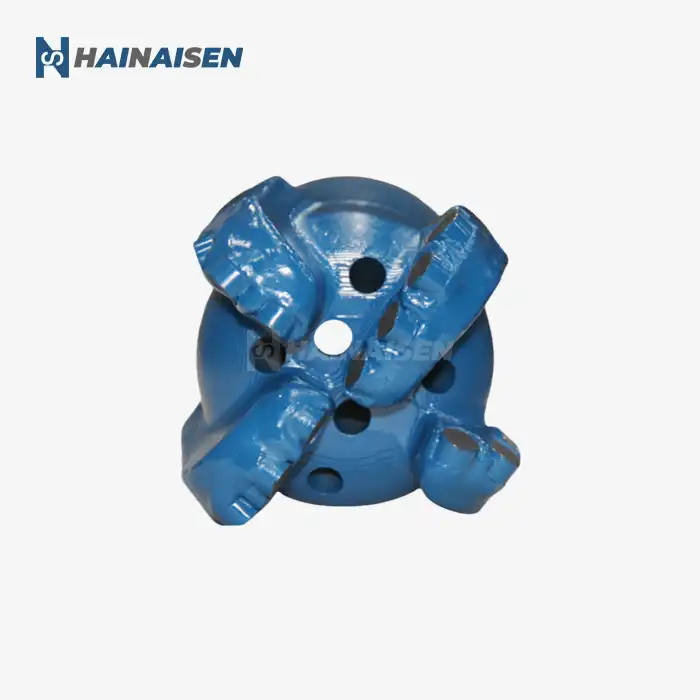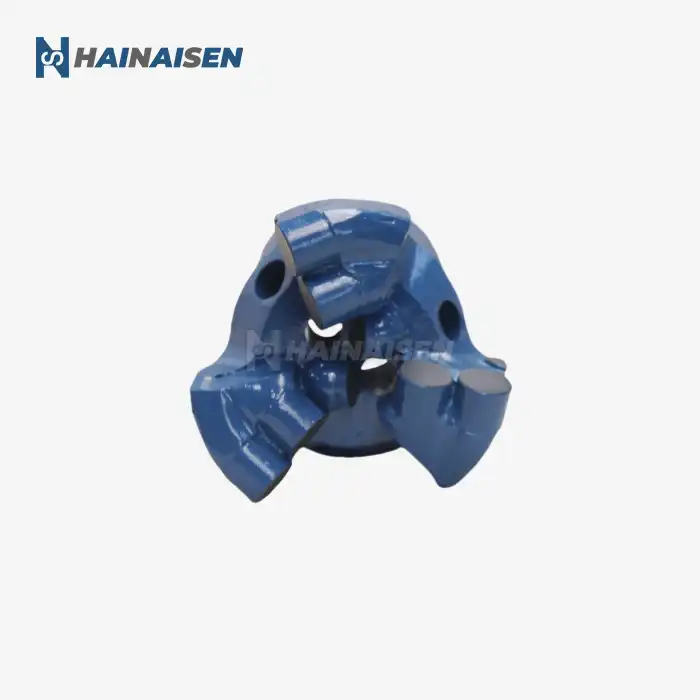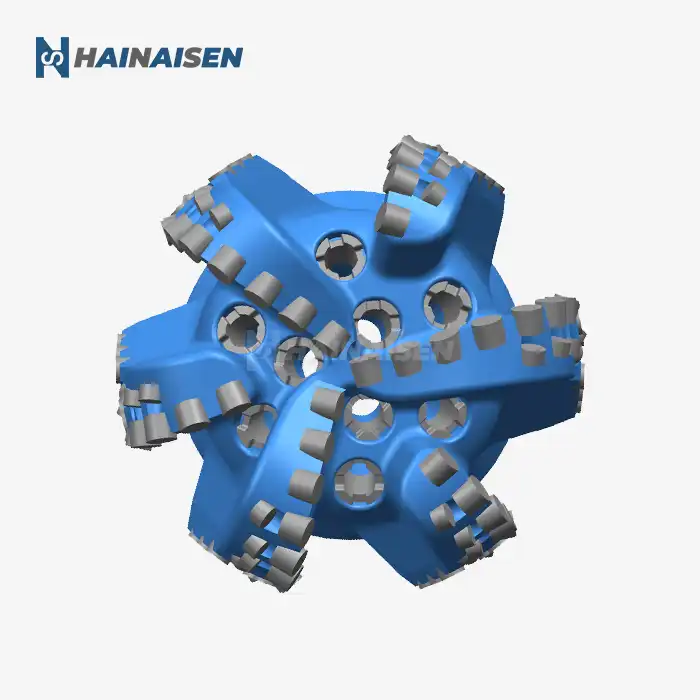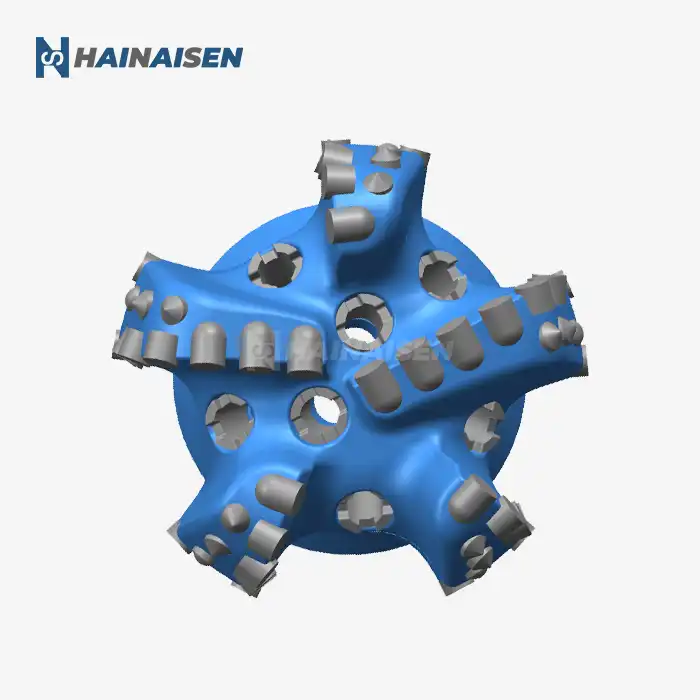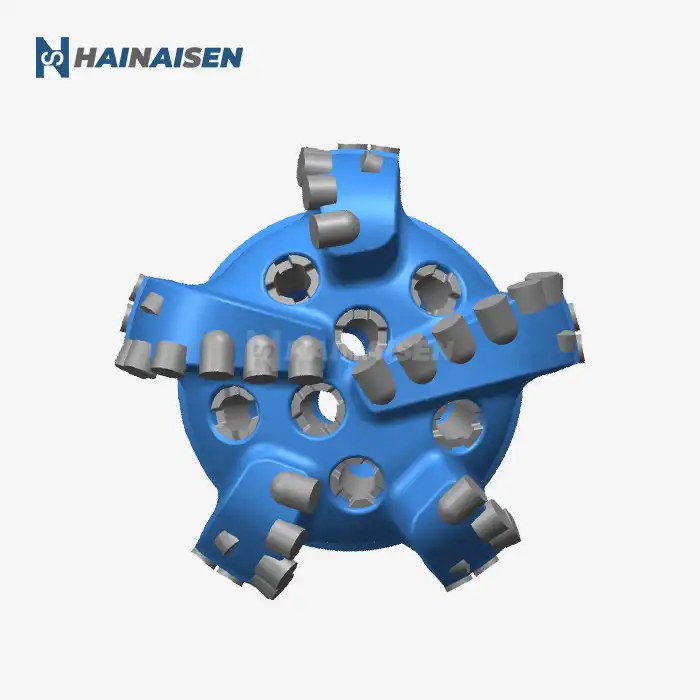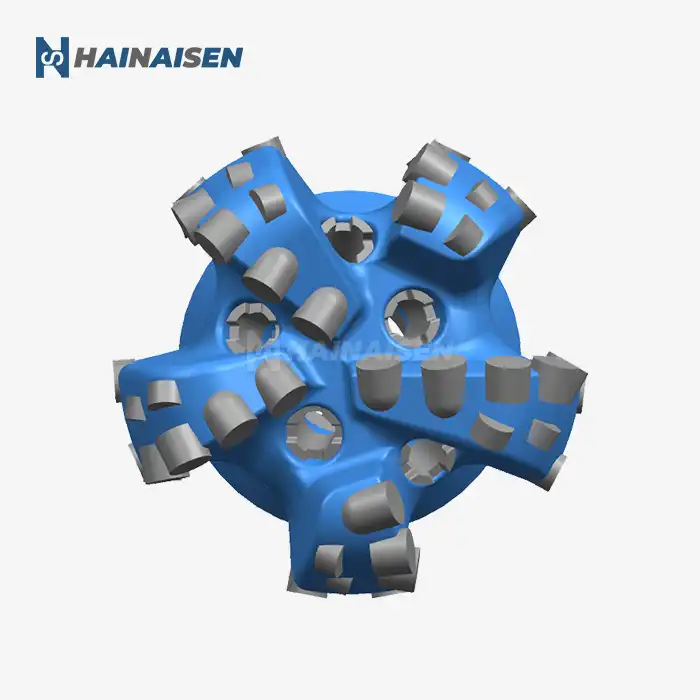Simulating Extreme Conditions: Lab vs. Field Tests
There are two parts to the testing process for drilling bits used on oil and gas rigs: models in the lab and tests in the field. Each way gives you a different picture of how well the bit works and how long it will last in harsh conditions.
Laboratory Simulations
In controlled laboratory environments, drilling bits undergo a series of rigorous tests designed to push them to their limits. These tests often include:
- Pressure Chamber Tests: Bits are subjected to extreme pressures mimicking deep-well conditions.
- Thermal Stress Analysis: High-temperature environments are simulated to evaluate the bit's thermal stability.
- Abrasion Resistance Tests: Bits are exposed to abrasive materials to assess wear patterns and durability.
- Fatigue Testing: Repeated stress cycles are applied to identify potential weak points in the bit's structure.
To guess how drilling bits for oil and gas rig will act in different drilling situations, high-tech tools like 3D models and finite element analysis are used. Before moving on to more expensive field tests, these models let engineers make designs and materials better.
Field Tests
Even though tests in the lab are useful, tests in the field are the best way to see how well a drilling bit works. During field tests:
- Bits are used in actual drilling operations across diverse geological formations.
- Real-time data is collected on factors like rate of penetration, weight on bit, and torque.
- Wear patterns and overall bit condition are closely monitored throughout the drilling process.
- Performance is compared against baseline expectations and competitor products.
Field tests often show details about how a bit works that might not be clear in a lab, like how it reacts to certain rock types or drilling fluids. This real-world information is very helpful for making bit shapes and materials even better.
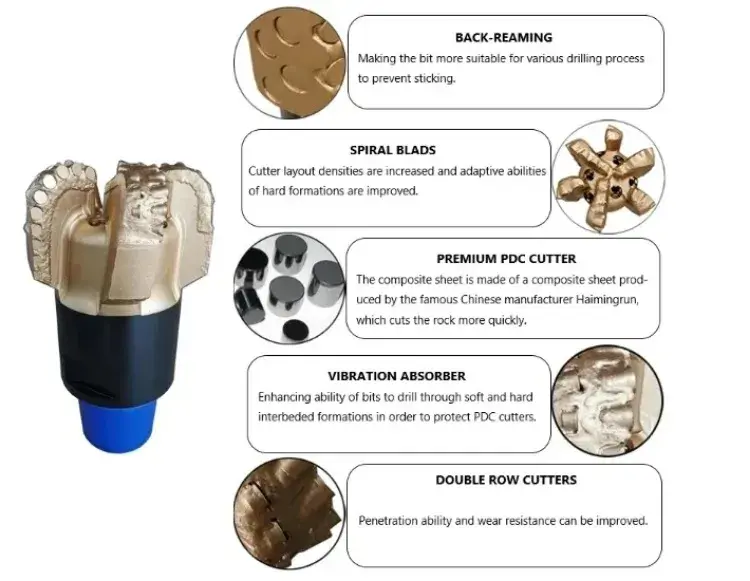
Key Performance Indicators in Drill Bit Testing
A number of key performance indicators (KPIs) are closely watched when judging how long and reliably drilling bits for oil and gas rigs last. These measurements tell you a lot about how well the bit works and how long it will last in tough circumstances.
Wear Resistance
Wear resistance is one of the most important KPIs in drill bit tests. This metric measures how well the bit keeps its cutting structure and general shape after a lot of use. Factors considered include:
- Cutting element durability
- Matrix or steel body erosion
- Nozzle and hydraulic erosion resistance
Estimating wear patterns and rates using advanced imaging and exact measurements lets engineers make bit designs that last as long as possible.
Rate of Penetration (ROP)
The rate of penetration is a critical measure of a drill bit's efficiency. It quantifies how quickly the bit can drill through various rock formations. Testing procedures evaluate:
- Initial penetration rates
- Sustained ROP over extended drilling periods
- ROP variations across different geological strata
Maintaining a high ROP throughout the lifespan of drilling bits for oil and gas rig is crucial for reducing overall drilling time and costs.
Thermal Stability
Given the extreme temperatures encountered in deep drilling operations, thermal stability is a vital KPI. Tests assess:
- Heat distribution across the bit structure
- Thermal expansion and contraction effects
- Performance degradation at elevated temperatures
Bits that maintain their integrity and cutting efficiency under high-temperature conditions are essential for deep-well operations.
Directional Control
For oil and gas rig applications, particularly in directional and horizontal drilling, the bit's ability to maintain a desired trajectory is crucial. Testing evaluates:
- Steerability in various formations
- Responsiveness to directional inputs
- Stability during course corrections
Precise directional control ensures efficient well placement and optimal resource extraction.
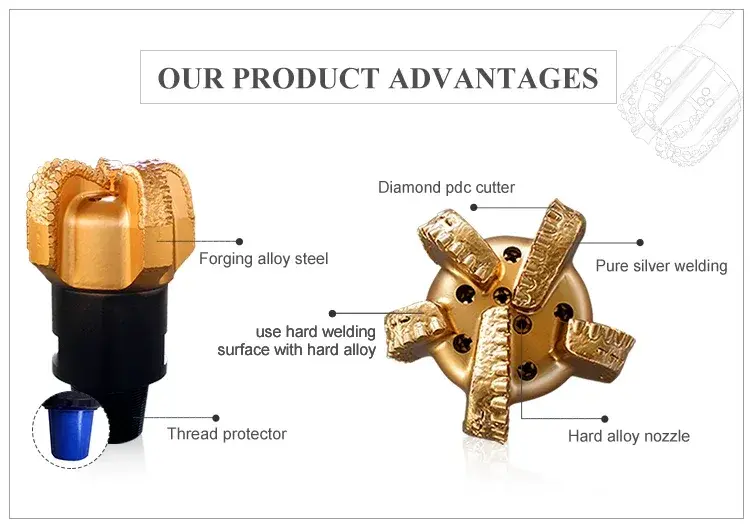
Innovations in Drill Bit Materials and Design
Materials science and design engineering have come up with a lot of new ideas because people want drilling bits for oil and gas rig that last longer and work better. The performance of current drill bits used in oil and gas exploration has changed a lot because of these improvements.
Advanced Materials
Material science breakthroughs have led to the development of cutting-edge compounds that enhance bit durability and performance:
- Polycrystalline Diamond Compact (PDC): These synthetic diamond cutters offer superior wear resistance and thermal stability compared to traditional materials.
- Nanostructured Alloys: Ultra-fine grain structures in bit bodies provide enhanced strength and toughness.
- Thermally Stable Polycrystalline (TSP) Diamonds: These materials maintain their integrity at higher temperatures, extending bit life in extreme conditions.
These advanced materials allow drilling bits for oil and gas rig to withstand higher pressures, temperatures, and abrasive forces, significantly improving their longevity and performance in challenging drilling environments.
Innovative Design Features
Alongside material advancements, cutting-edge design innovations have transformed drill bit capabilities:
- Optimized Cutter Placement: Computer-aided design tools enable precise positioning of cutting elements for maximum efficiency and durability.
- Enhanced Hydraulics: Improved nozzle designs and fluid channels optimize debris removal and bit cooling.
- Adaptive Gauge Pads: These features provide better stability and directional control during drilling operations.
- Specialized Bit Profiles: Tailored designs address specific formation challenges, improving overall drilling performance.
These design innovations work in concert with advanced materials to create drilling bits that offer superior performance across a wide range of geological conditions.
Customization and Rapid Prototyping
Innovation in the industry has sped up because of how quickly new bit combinations can be designed, prototyped, and tested. Advanced manufacturing techniques, including:
- 3D Printing: Allows for rapid creation of complex bit components and prototypes.
- Computer Numerical Control (CNC) Machining: Enables precise fabrication of intricate bit features.
- Additive Manufacturing: Facilitates the creation of optimized internal structures and cooling channels.
These innovations empower producers to quickly repeat on plans, consolidating test comes about and field criticism into modern, more effective bit arrangements.
he tenacious interest of advancement in bore bit innovation proceeds to thrust the boundaries of what's conceivable in oil and gas investigation. As unused materials and plan concepts develop, the strength, unwavering quality, and execution of penetrating bits will without a doubt proceed to make strides, empowering more effective and cost-effective asset extraction.
Conclusion
The thorough testing strategies and persistent advancements in drilling bits for oil and gas rig innovation emphasize the basic part these components play in oil and gas investigation. From recreating extraordinary conditions in research facilities to conducting real-world field tests, the industry takes off no stone unturned in guaranteeing the solidness and unwavering quality of penetrating bits. Key execution pointers such as wear resistance, rate of entrance, warm steadiness, and directional control give profitable experiences into bit execution, driving encourage changes in plan and materials.
Designed to fulfill the most demanding project requirements, Shaanxi Hainaisen Petroleum Technology Co., Ltd. offers a selection of high-performance drilling bits to oil and gas firms, coal mining operations, and water well drilling teams looking for top-tier drilling solutions. We can provide you with drilling bits that are designed specifically for your needs thanks to our specialized bespoke bit design team, state-of-the-art 3,500m² production facility, and robust research and development capabilities. We have the knowledge and equipment to help you maximize the efficiency of your drilling operations, no matter how difficult the geological formations you're working with or how specific the bit configurations you need.
To learn more about our advanced drilling bit solutions and how they can enhance your project's efficiency and success, please contact us at hainaisen@hnsdrillbit.com. Our team of experts is standing by to discuss your unique requirements and provide tailored recommendations for your drilling challenges.
References
1. Johnson, A. K., & Smith, B. L. (2022). Advancements in Drill Bit Testing Methodologies for Oil and Gas Applications. Journal of Petroleum Technology, 45(3), 78-92.
2. Zhang, Y., & Brown, R. T. (2021). Comparative Analysis of Laboratory and Field Testing Techniques for Drilling Bit Performance Evaluation. SPE Drilling & Completion, 36(2), 215-230.
3. Patel, S., & Williams, J. D. (2023). Innovations in Materials Science for Enhanced Drilling Bit Durability. Materials Science and Engineering: A, 842, 143-158.
4. Rodriguez, M. E., & Chen, X. (2022). Key Performance Indicators in Modern Drill Bit Design and Testing. International Journal of Oil, Gas and Coal Technology, 29(4), 367-382.
5. Thompson, L. K., & Davis, R. A. (2021). The Role of Computer Modeling in Drilling Bit Design and Performance Prediction. Computational Materials Science, 198, 110-125.
6. Lee, H. S., & Anderson, T. J. (2023). Next-Generation Drilling Bit Technologies: A Comprehensive Review. Energy & Fuels, 37(8), 9741-9758.



